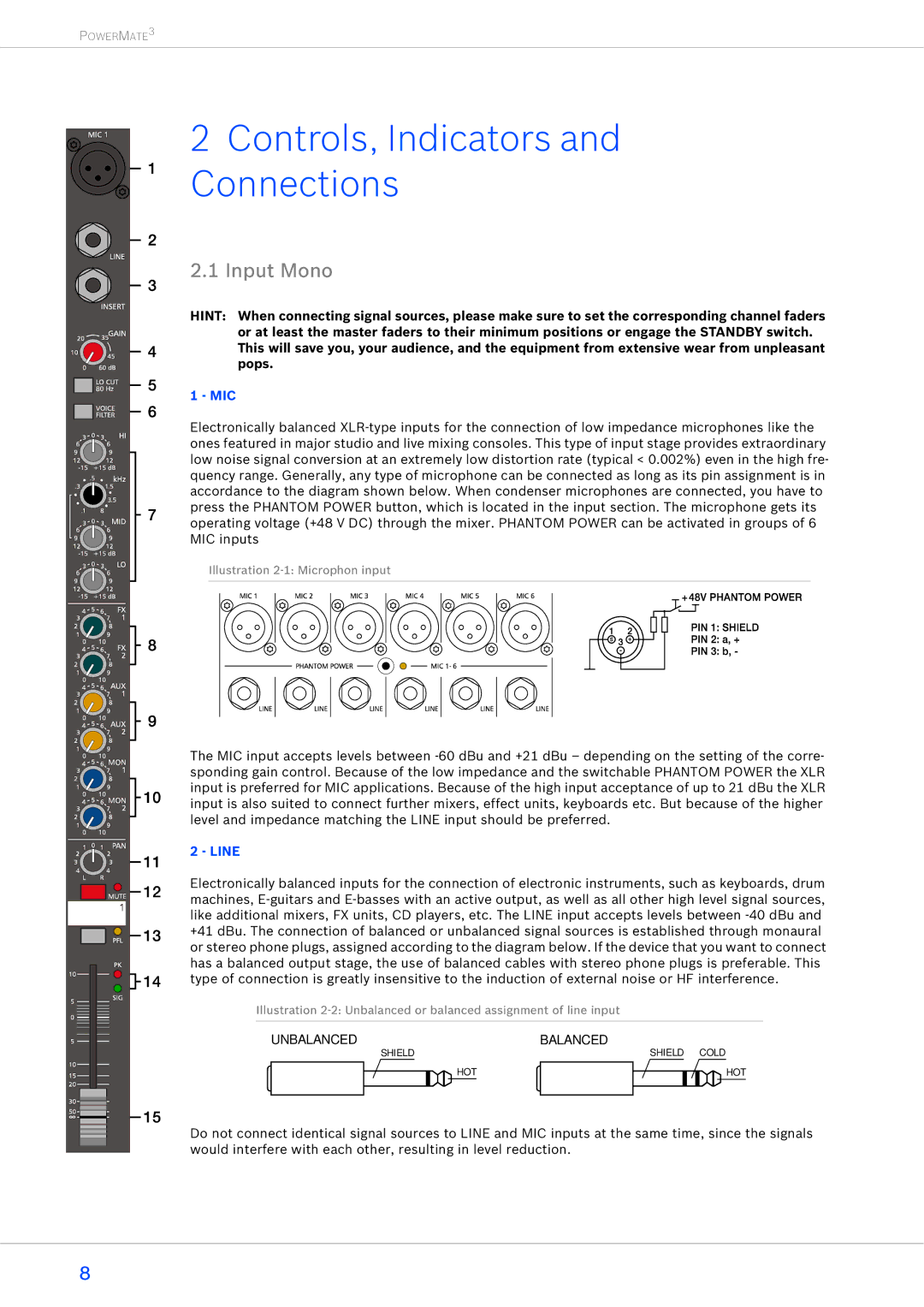POWERMATE3
2Controls, Indicators and Connections
2.1 Input Mono
HINT: When connecting signal sources, please make sure to set the corresponding channel faders or at least the master faders to their minimum positions or engage the STANDBY switch. This will save you, your audience, and the equipment from extensive wear from unpleasant pops.
1 - MIC
Electronically balanced XLR-type inputs for the connection of low impedance microphones like the ones featured in major studio and live mixing consoles. This type of input stage provides extraordinary low noise signal conversion at an extremely low distortion rate (typical < 0.002%) even in the high fre- quency range. Generally, any type of microphone can be connected as long as its pin assignment is in accordance to the diagram shown below. When condenser microphones are connected, you have to press the PHANTOM POWER button, which is located in the input section. The microphone gets its operating voltage (+48 V DC) through the mixer. PHANTOM POWER can be activated in groups of 6 MIC inputs
Illustration 2-1: Microphon input
The MIC input accepts levels between -60 dBu and +21 dBu – depending on the setting of the corre- sponding gain control. Because of the low impedance and the switchable PHANTOM POWER the XLR input is preferred for MIC applications. Because of the high input acceptance of up to 21 dBu the XLR input is also suited to connect further mixers, effect units, keyboards etc. But because of the higher level and impedance matching the LINE input should be preferred.
2 - LINE
Electronically balanced inputs for the connection of electronic instruments, such as keyboards, drum machines, E-guitars and E-basses with an active output, as well as all other high level signal sources, like additional mixers, FX units, CD players, etc. The LINE input accepts levels between -40 dBu and +41 dBu. The connection of balanced or unbalanced signal sources is established through monaural or stereo phone plugs, assigned according to the diagram below. If the device that you want to connect has a balanced output stage, the use of balanced cables with stereo phone plugs is preferable. This type of connection is greatly insensitive to the induction of external noise or HF interference.
Illustration 2-2: Unbalanced or balanced assignment of line input
UNBALANCED
SHIELD

 HOT
HOT
Do not connect identical signal sources to LINE and MIC inputs at the same time, since the signals would interfere with each other, resulting in level reduction.

![]()
![]() HOT
HOT![]()
![]()
![]() HOT
HOT